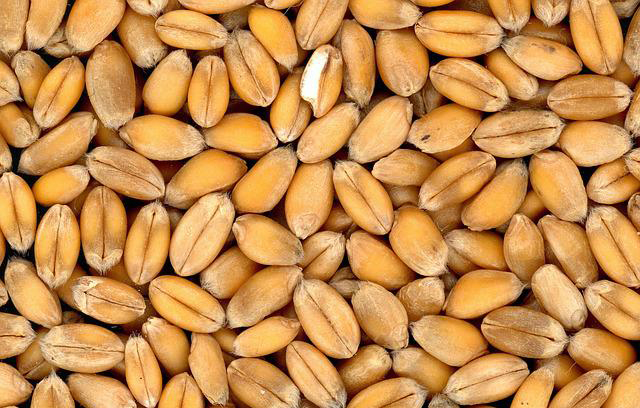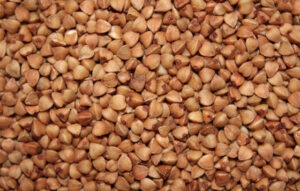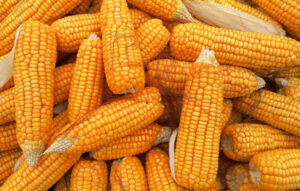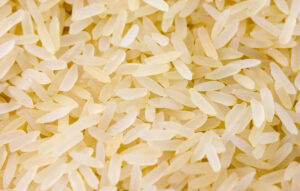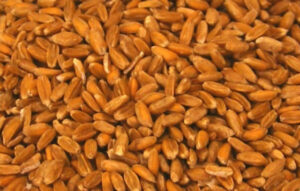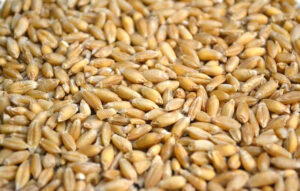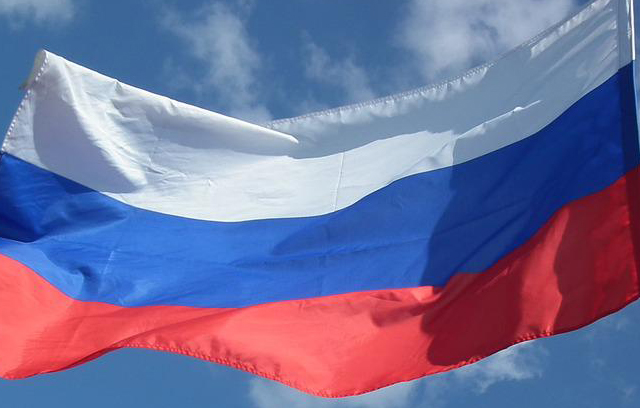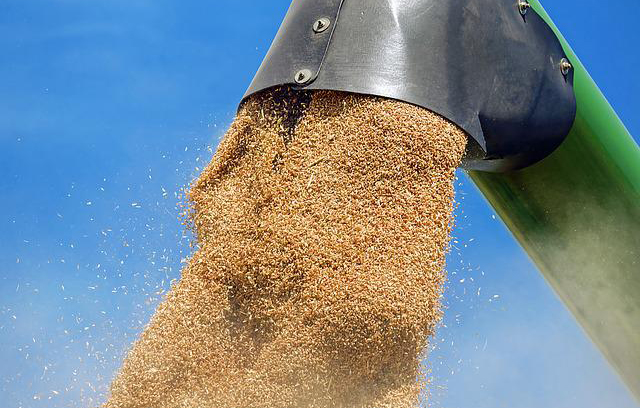GrainProTrade – Wheat wholesale at producer prices
Company GrainProTrade delivers wheat directly from farmers in Ukraine and Kazakhstan on favorable terms. Our wheat has glassiness of more than 80%, protein content of 16,5% and gluten content of 30%.
You can safely buy wheat from us without worrying about the quality, because all our products are consciously selected by our QM employees in Ukraine and thus meet the highest standards, which guarantees the expected quality of the goods. Besides the high standard, the products are sold at an affordable wholesale price. The conditions for the sale of wheat can be specified at any time in writing or by telephone with the manager. Our team provides our customers with the in Big Bag packed ordered wheat by truck within 5 working days.
Current prices for wheat:
- wheat to FCA-Price from €190/ton plus freight costs.
The main advantages of the ZusaWorking with our company:
- the high level of professionalism of our entire team, which ensures a hassle-free delivery of high-quality wheat in the shortest possible time;
- an appropriate price level, since we work directly with wheat producers in Ukraine and Kazakhstan, e.gusamen work;
- convenient delivery straight to you.
Contact our managers on the website or by phone. We offer high quality wheat at an optimal price!
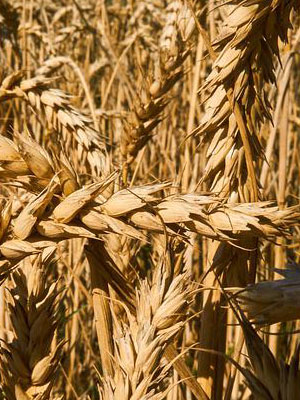
wheat field
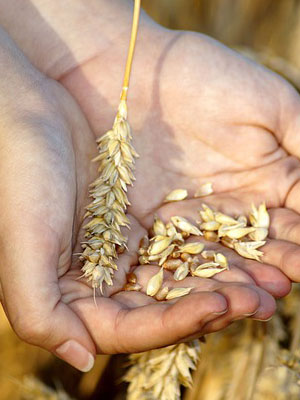
Wheat
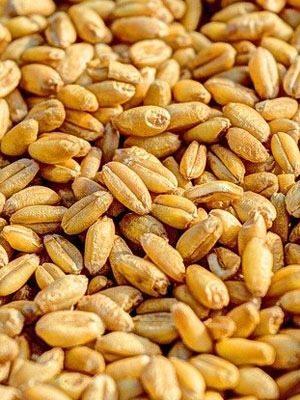
Wheat
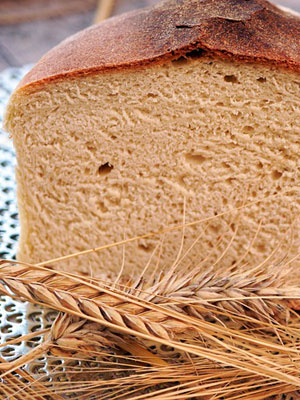
wheat bread
All About Wheat
Wheat (Triticum) is the most important food crop. In the worldwide grain production wheat takes first place. This value of wheat is due to its high yield, a high content of endosperms (80-84% of the weight of the grain), which makes it possible to obtain a high yield of varietal flour during processing.
The properties of the protein, carbohydrate and enzyme complex of wheat are also valuable. In wheat, gliadin and glutenin make up more than 80% of the total protein content. These proteins are found in wheat in a ratio of 1,1:1-1,5:1. By swelling, they absorb 200-300% water in relation to their dry weight and form a binding elastic mass - gluten.
The elastic properties of gluten make it possible to obtain highly porous bread, high-quality macaroni, confectionery and other products from wheat flour. Wheat starch swells well and gives a viscous, relatively stable paste when pasting.
Wheat sugars are used in the baking of wheat flour bread to keep the fermentation processes going, but since their amount is not large enough, the wheat enzymes that cause the starch to become sugary are of great importance.
Wheat contains the following vitamins: Mono- and Disaccharides, NLC-Saturates, Ash, Starch, Water, Dietary Fiber, Unsaturates, Sodium, Potassium, Phosphorus, Magnesium, Calcium, Sulfur, Copper, Silicon, Aluminum, Titanium, Strontium, Iodine , manganese, chromium, fluorine, molybdenum, cobalt, nickel, zinc, iron, chlorine.
The ZusaComposition of wheat grains includes: starch and other carbohydrates (50-60%), proteins (10% to 20%), vegetable fats. Grains contain a complex of vitamins (B1, B2, B6, C) and minerals (calcium, potassium, magnesium). The calorie content of wheat is 339 kcal. The nutritional value of wheat: proteins - 13,68 g, fats - 2,47 g, carbohydrates - 71,13 g.
The wheat plant has a stem common to all grains - a straw with nodes and usually hollow internodes, and the leaves are simple, linear, regular, double-rowed. Each leaf exits the node and consists of a vagina that encloses the overlying internode like a forked tube and a long, narrow plate. At the border between the vagina and the plate there are three outgrowths - a wide, foil-shaped tongue next to the stalk and two covering the last finger-shaped eyelet.
The upper internode, or stalk, bears an inflorescence—a complex ear. It consists of a crank-shaped central axis and small, simple inflorescences, again distant from it,—spikes showing with the broad side to the axis. Each spikelet bears on its axis from two to five regularly deciduous flowers, the whole of which is covered from below with two upper and lower spikelet scales covering the leaves of a simple inflorescence.
Each flower is protected by a pair of specialized bracts - larger and thicker lower scales and relatively thin upper scales. In some so-called prickly wheat varieties, the lower flower scale ends with a long point.
The flowers are usually sexual, with three stamens and a pistil bearing two pinnate stigmas. At the base of the ovary are two or three small scales - floral films or lyes corresponding to a floral display. At the time of flowering, they swell, pushing the surrounding flower scales apart. Wheat is a primarily self-pollinating plant, although some of its species also have cross-pollination. After fertilization, the ovary becomes a small, solid fruit held in the ear by scales of flowers.
A grain is a fruiting body formed from the ovary wall, which is inseparable from the single seed, which contains the embryo and endosperm. The embryo is located laterally at the base of the grain and consists of a kidney, a root, and a modified cotyledon adjacent to the endosperm. After germination, the radicle will support the primary root system, the kidney will support the plant's aerial organs and its "adult" roots, and the shield will release enzymes that will digest the endosperm and direct its nutrients to the beginning of shoot development.
The sown grain of wheat absorbs water, swells and germinates. The kidney and radicle go outward and grow up and down accordingly. On the surface of the soil, from the first node of the straw arising from the kidney, the secondary roots are removed, which branch out intensively, forming a so-called lacquered root system. The place where the stem meets the root is called the root collar. A little above, the lower nodes of the stem are tightly strung together, and side shoots develop from the axils of their leaves near the soil surface - wheat shovels appear.
Up to this stage, the plant is considered a shoot. Then the phase of exit into the tube begins, that is, the rapid elongation of the straw, followed by an earing, that is, the formation of inflorescences: the upper internode (stalk) carries the spike 7-10 cm above the upper leaf.
The grain, which has reached its final size, contains a germ and is watery, first transparent, then the endosperm (stage of so-called milk maturity) turns white as the starch content increases. Gradually, the moisture of the grain decreases, and its contents begin to resemble a sticky dough (wax maturity) in consistency. A fully mature (technically mature) grain is firm.
Wheat is an unpretentious culture, it is quite undemanding to soil and climatic conditions, thanks to which it is successfully grown on all continents except Antarctica. Wheat tolerates low temperatures well. In cold resistance it is only Barley, potatoes and some fodder herbs. Wheat also perfectly tolerates high temperatures if they are not combined with high humidity. In this case, large crop losses are associated with high susceptibility of plants to diseases.
The optimal temperature for growth and development of wheat is about 25 °C, in general, the culture grows well in the range of 3 °C to 32 °C. Sowing wheat too early and too late is undesirable. In the first case, the risk of germ diseases increases, in the second - there is a very probable danger of winter frosts, when the plants do not have time to reach the deciduous phase before leaving winter.
Depending on climatic conditions, spring wheat is sown from March to May, its growing season lasts about 70-110 days. In this case, the grain harvest is carried out when 13% of the grain moisture is reached. If harvested earlier, the grain must be dried, harvesting later will result in a lower yield as a result of the grain being wasted.
Winter wheat is sown in late summer - early fall depending on the zone and weather conditions. It has 2 periods of active vegetation - autumn, during which the vegetative mass grows and spring-summer, during which vegetative growth continues, generative organs and crops are formed. Winter wheat plants tolerate negative winter temperatures well. The coldest varieties withstand temperatures as low as -35°C. However, a prerequisite for a good hibernation is a good snow cover. The winter hardiness of the culture is also determined by its resistance to such unfavorable factors as whipping, soaking, bulging, ice crust, etc. The optimal temperature for the appearance of germination is between 13-15 °C, but wheat seeds begin to germinate already at 1-2 °C.
During the growing season, winter wheat requires an average daily temperature of around 1900 to 2200 °C, with at least 1300 °C in spring.
Wheat responds very well to irrigation. It is especially bad if it tolerates a lack of moisture at the stage of exit into the pipe, watering the grain (it causes damage). Black earth is the best soil for wheat, but the right fertilization also enables good wheat yields on turf and podzol soil. To form a hundredweight of grain, wheat consumes 3 kilograms of nitrogen, 1 kilogram of phosphorus and about 2-3 kilograms of potassium. The pH of the soil should be at least 5 as it does not tolerate acidic soil.
The best progenitors of winter and spring wheat are clean and busy fumes, herbs, Legumes, Corn etc.
Soft wheat flour is primarily for the production of bread, bakery and confectionery, semolina. It has large starchy grains and is low in gluten, so it absorbs less water compared to solid water.
In durum wheat flour, the starch granules are smaller and the gluten larger, so its main purpose is to make pasta.
In addition to the food industry, wheat plays a major role in feed production. Wheat flour, green matter, straw, hay, wheat bran, as well as mill waste are passed on to animal feed.
Wheat starch has been widely used, successfully used in a variety of industries — from food processing to oil refining. Wheat germ is becoming increasingly popular in cooking, medicine and cosmetics.

